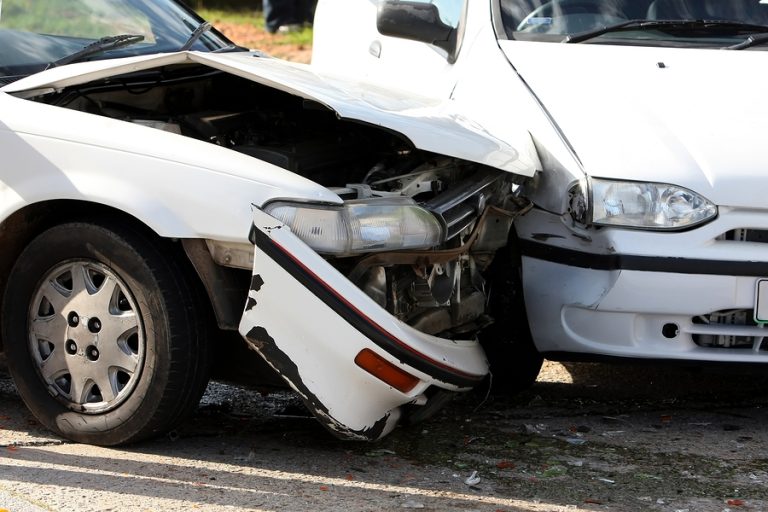[profileleft] [/profileleft]The Age of Technology has changed the way we live in just about every way. We can do a lot more a lot faster now than we could 30 years ago. The Internet, cellphones and the like have all contributed to a world where information is immediately available. Unfortunately, the presence of these tools is not always a positive. One way in which it is not involves safe driving. Distracted driving has become a serious problem, so much so that companies are offering new hands-free capabilities in vehicles. Conventional wisdom stated that as long as our hands are on the steering wheel and our eyes are on the road, we are not engaging in distracted driving. A recent AAA study on mental distraction appears to be challenging that entire line of thinking. It’s possible that a mental distraction is just as dangerous as one that is physical.
[/profileleft]The Age of Technology has changed the way we live in just about every way. We can do a lot more a lot faster now than we could 30 years ago. The Internet, cellphones and the like have all contributed to a world where information is immediately available. Unfortunately, the presence of these tools is not always a positive. One way in which it is not involves safe driving. Distracted driving has become a serious problem, so much so that companies are offering new hands-free capabilities in vehicles. Conventional wisdom stated that as long as our hands are on the steering wheel and our eyes are on the road, we are not engaging in distracted driving. A recent AAA study on mental distraction appears to be challenging that entire line of thinking. It’s possible that a mental distraction is just as dangerous as one that is physical.
About the Mental Distraction Study
AAA, or the American Automobile Association, completed this massive study. Those who would like to review it in totality can find it here. Researchers actually performed three separate experiments. All of them were designed to quantifiably measure the amount of mental distraction present in each subject as they drove. The subjects were fitted with a device that tracked their reaction times and brain activities. The subjects had to deal with what the study referred to as ‘conditions’ that were designed to distract them. These conditions included:
- A baseline single-task – No secondary stimuli were presented in order to record a baseline.
- Listening to the radio
- Listening to an audio book
- Engaging in conversation with a passenger seated in the front seat
- Holding a conversation on a hand-held cell phone
- Holding a conversation on a hands-free cell phone
- Using a speech-to-text email system
- A verbal OSPAN task
OSPAN, in a basic sense, involves a subject completing a simple math problem, reading a word and then attempting to recall that information. It is designed to define the maximum number of words that a person can recall, thereby defining his or her operation span, or OSPAN. The researchers presented the subjects with each of these conditions in all three of the experiments.
The First Mental Distraction Experiment
38 people between the ages of 18 and 30 participated in this experiment. All of them were fit to drive, in that they did not suffer from any health or vision problems. The subjects were asked to look at a computer screen and the researchers flashed green and red lights on it randomly. The subjects were supposed to push a button with their thumb when they saw a green light appear and do nothing when a red light appeared. The lights remained on display either until the subject reacted to them or one second had passed.
The eight conditions mentioned above were then applied to the subjects while they watched the screen, and their ‘peak latency’ – or amount of time required to respond to the stimuli, in this case the lights – was recorded. Those results, measured in milliseconds, appear below:
- Single task – 462 milliseconds
- Listening to the radio – 500 milliseconds
- Listening to a book on tape – 525 milliseconds
- Talking to a passenger – 550 milliseconds
- Using a hand-held phone – 575 milliseconds
- Using a hands-free phone – 562 milliseconds
- Speech-to-text technology – 575 milliseconds
- OSPAN – 637 milliseconds
The single task step and the OSPAN step were designed to establish the extremes on reaction time, and that’s what happened. The first experiment seemed to prove that the higher the cognitive workload in a subject, the more distracted the subject became.
The Second Mental Distraction Experiment
32 subjects participated in the second experiment. Instead of looking at a computer screen, these subjects spent time in a driving simulator. They were presented with the same secondary stimuli, or driving distractions. The subjects were instructed to follow a lead vehicle visible in the simulator and to allow for two seconds of following distance. They were placed in a highway driving environment. They were not allowed to pass the lead vehicle and were supposed to brake when that vehicle hit its brakes. The researchers measured the time it took for the subjects to brake properly. The results appear below, again measured in milliseconds:
- Single task – 925 milliseconds
- Listening to the radio – 875 milliseconds
- Listening to a book on tape – 950 milliseconds
- Talking to a passenger – 975 milliseconds
- Using a hand-held phone – 925 milliseconds
- Using a hands-free phone – 950 milliseconds
- Speech-to-text technology – 1,050 milliseconds, or over one second
- OSPAN – 1,100 milliseconds, or 1.1 seconds
It’s clear that the reaction times of the subjects were slower than those that were recorded in the first experiment when driving in a simulator.
The Third Mental Distraction Experiment
32 subjects participated in this study. The final experiment involved the subjects driving an actual vehicle with special instruments in a residential area. A camera was also installed in the vehicle that recorded the eye movements of the subjects at critical points on the route. These critical points included four-way stops and other locations where a driver had to make decisions. The cameras were used to see if the subjects glanced at their rear-view and side mirrors. These are considered the proper eye movements when driving a vehicle.
Below are the probabilities that the subjects would glance properly at critical locations on the driving route:
- Single task – 0.725
- Listening to the radio – 0.71
- Listening to a book on tape – 0.68
- Talking to a passenger – 0.66
- Using a hand-held phone – 0.66
- Using a hands-free phone – 0.67
- Speech-to-text technology – 0.64
- OSPAN – 0.61
Once again, distracted driving became more probable as people used different things in their vehicle.
Overall Distracted Driving Results
The researchers combined all of these distracted driving results into one metric so that each of the different conditions could be scored. The mental distraction scale ranged from 1.0 for the single task of driving to 5.0 for the OSPAN task. Each of the scores appears below:
- Single task – 1.0
- Listening to the radio – 1.21
- Listening to a book on tape – 1.75
- Talking to a passenger – 2.33
- Using a hand-held phone – 2.45
- Using a hands-free phone – 2.27
- Speech-to-text technology – 3.06
- OSPAN – 5.0
All of this information suggests the following:
- It could be possible to standardize the measurement of mental distraction while driving.
- Talking to a passenger is a form of distracted driving.
- Speech-to-text technology is a serious mental distraction for motorists.
- The use of any type of cell phone could constitute distracted driving, as we have discussed.
- These conclusions challenge those from other studies we have shared.
How a San Diego Car Accident Lawyer Can Help
Hopefully we can begin to quantify mental distraction levels for drivers, as this will help all of us avoid these problematic behaviors. Distracted driving comes in all forms. Simply placing hands on the steering wheel and keeping eyes on the road does not mean that a driver is not distracted. Unfortunately, thousands of people are injured and killed every year in the United States because of distracted driving. If you have suffered because of this problem, you need to seek the help of a San Diego personal injury lawyer who understands how to fight for the rights of clients. Contact Gomez Trial Attorneys today for a free case evaluation.







